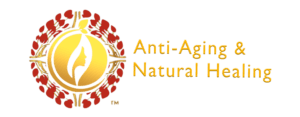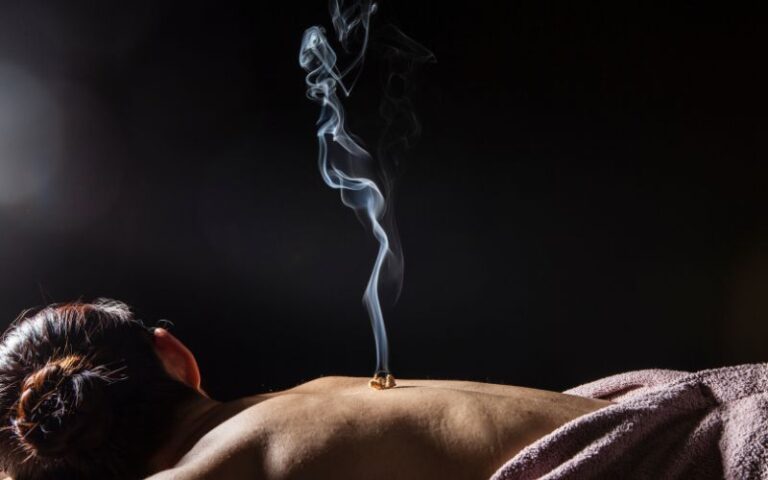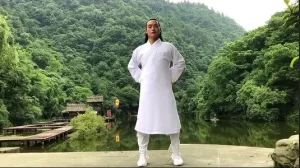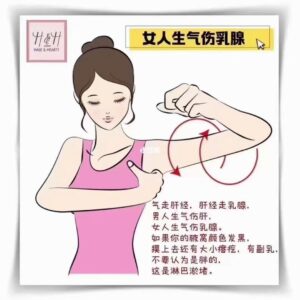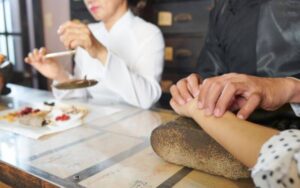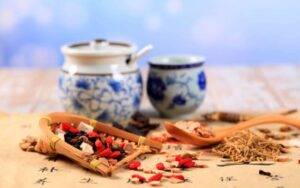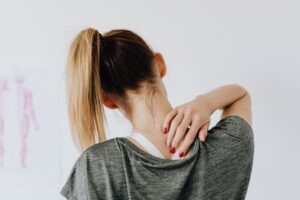Moxibustion, a traditional Chinese medicine technique, has been used for thousands of years to treat various ailments and improve overall health. The history of moxibustion dates back to ancient times and has been an integral part of Chinese medical practice.
Let’s explore the origins of moxibustion, its applications in medical treatment, the effects of moxibustion on the body, and its place in both traditional Chinese medicine and modern Western medicine.
Origins Of Moxibustion
Moxibustion is believed to have originated in ancient China as a way to stimulate the body’s energy flow, known as Qi, and promote healing.
The practice involves burning dried mugwort (Artemisia) or other herbs on specific points of the body to generate heat and stimulate blood flow.
The earliest recorded use of moxibustion dates back to the Han Dynasty (206 BC – 220 AD) in China. It was believed that moxibustion could help balance the body’s Yin and Yang energies, which are essential for maintaining good health.
The Origin Of Moxibustion
The exact origins of moxibustion are unclear, but it is believed to have been practiced in ancient China as early as 2000 years ago.
The use of moxibustion was first recorded in the Huang Di Nei Jing, or Yellow Emperor’s Classic of Internal Medicine, which is one of the oldest medical texts in Chinese history.
Moxibustion was traditionally used to treat a variety of conditions, including arthritis, digestive disorders, and gynecological issues.
One common application of moxibustion was in cases of breech presentation during childbirth, where burning moxa on specific acupuncture points was believed to help turn the baby into the correct position for delivery.
Application Of Moxibustion
There are two main methods of applying moxibustion: indirect and direct.
In indirect moxibustion, a practitioner places a cone or cylinder of moxa on top of an acupuncture point and burns it until the skin becomes warm.
Direct moxibustion involves placing a small amount of moxa directly on the skin and burning it to create a blister or scar.
Moxibustion can be used to treat a wide range of conditions, including breech presentation during pregnancy, arthritis, digestive disorders, and more.
Effects Of Moxibustion On The Body
Moxibustion is believed to work by increasing circulation and boosting the body’s immune system.
The heat generated by burning moxa can help relax muscles, improve blood flow, and reduce pain and inflammation.
Some studies have also shown that moxibustion can stimulate the release of endorphins, which are natural painkillers produced by the body.
Moxibustion In Traditional Chinese Medicine
In traditional Chinese medicine, moxibustion is often used in conjunction with acupuncture to treat a variety of ailments.
The combination of acupuncture and moxibustion is believed to enhance the effects of both treatments and promote overall wellness.
Moxibustion is also commonly used to treat cold and damp conditions in the body, as well as to strengthen the immune system and improve circulation.
Moxibustion In Modern Western Medicine
While moxibustion is still primarily used in traditional Chinese medicine, it has gained some recognition in modern Western medicine as well.
Some studies have shown that moxibustion can be effective in treating conditions such as hot flashes, chronic pain, and herpes zoster (shingles).
However, more research is needed to fully understand the mechanisms of moxibustion and its potential benefits in modern medical practice.
Benefits Of Moxibustion
Moxibustion treatments have been found to offer a variety of benefits for both physical and mental health.
Here are some of the key advantages associated with moxibustion:
- Pain Relief: One of the most common uses of moxibustion is for pain relief. The heat generated during moxibustion can help relax muscles, improve blood flow, and reduce inflammation, making it an effective treatment for conditions such as arthritis and back pain.
- Improved Digestion: Moxibustion has been shown to stimulate the digestive system, helping to alleviate symptoms of indigestion, bloating, and other gastrointestinal issues.
- Enhanced Immune Function: By boosting circulation and stimulating the release of endorphins, moxibustion can help strengthen the immune system and promote overall wellness.
- Stress Reduction: The relaxation and pain-relieving effects of moxibustion can also help reduce stress and anxiety, promoting a sense of calm and well-being.
- Breech Presentation: Moxibustion has been used for centuries to help turn babies in a breech presentation during pregnancy, making delivery easier and safer for both mother and child.
- Improved Energy Flow: In traditional Chinese medicine, moxibustion is believed to help balance the flow of energy, or qi, in the body, promoting overall health and well-being.
Comparative Study Of Moxibustion Treatments
A comparative study published in the Shanghai Journal of Acupuncture and Moxibustion found that moxibustion treatments were effective in reducing pain and improving the overall quality of life in patients with chronic conditions such as osteoarthritis.
The study compared the effects of moxibustion to traditional acupuncture and found that both treatments were beneficial, but moxibustion had a slightly more significant impact on pain reduction.
Therapeutic Methods And Materials For Moxibustion
Therapeutic methods for moxibustion vary depending on the condition being treated.
For example, in the treatment of moxibustion sore, practitioners may use larger cones of moxa and apply them directly to the affected area to help promote healing and reduce inflammation.
In patients with digestive disorders, moxibustion may be applied to specific points on the abdomen to help regulate digestion and alleviate symptoms.
Materials used for moxibustion can also vary, with dried mugwort being the most commonly used herb.
However, other herbs such as ginger, garlic, and cinnamon may also be used depending on the condition being treated.
Some practitioners may even use special moxa sticks or smokeless moxa to minimize smoke and odor during treatment.
Cultural Significance Of Moxibustion In Chinese Culture
In Chinese culture, moxibustion has a long history and is deeply rooted in traditional medicine.
The practice of moxibustion is believed to balance the body’s energy, or qi, and promote overall health and well-being.
Moxibustion is also seen as a way to ward off illness and protect against negative energies.
The origins of moxibustion can be traced back to ancient China, where it was used as a form of medical treatment for various conditions.
Over time, the practice of moxibustion became intertwined with acupuncture and other traditional Chinese medicine practices.
Ancient Theory And Practice Of Moxibustion
In traditional Chinese medicine, moxibustion is based on the theory that the body’s energy, or qi, flows along specific pathways called meridians. By applying heat to certain acupuncture points along these meridians, practitioners believe they can stimulate the flow of qi and promote healing.
The Role Of Blood Vessels In Moxibustion
One theory behind the effectiveness of moxibustion is that it stimulates blood flow to the area being treated.
The heat from the burning moxa causes blood vessels to dilate, which can help improve circulation and reduce pain and inflammation. This increased blood flow may also help deliver nutrients and oxygen to the tissues, promoting healing.
In patients with conditions such as herpes zoster or hot flashes, moxibustion is particularly effective in reducing symptoms.
Studies have shown that moxibustion can help alleviate pain and itching associated with herpes zoster by improving circulation and reducing inflammation in the affected area.
Similarly, moxibustion has been shown to reduce the frequency and severity of hot flashes in menopausal women by regulating hormone levels and promoting overall balance in the body.
Moxibustion Treatments Today
In modern practice, moxibustion treatments are often used in conjunction with acupuncture or other therapeutic methods to enhance their effectiveness.
Patients may receive moxibustion treatments for a variety of conditions, including musculoskeletal pain, digestive disorders, and respiratory issues.
In addition to its physical effects on the body, moxibustion is also deeply rooted in Chinese culture and tradition.
Many people in China continue to use moxibustion as a way to maintain their health and well-being, passing down knowledge and techniques from generation to generation.
Future of Moxibustion
As the interest in traditional Chinese medicine continues to grow around the world, the future of moxibustion looks promising.
Researchers are continuing to explore the mechanisms behind how moxibustion works and its potential applications in various health conditions.
With advancements in technology and research, there may be new ways to deliver moxibustion treatments that are more convenient and accessible for patients.
Additionally, as more healthcare practitioners become trained in traditional Chinese medicine practices, including moxibustion, it may become more widely accepted as a complementary therapy in mainstream medical practice.
Get Started With Moxa Therapy Academy
Are you prepared to take a revolutionary step towards complete health? Look no further than the Ignite Wellness Moxa Therapy Academy.
With over 20 years of exceptional expertise in Traditional Chinese Medicine (TCM), our academy is dedicated to revitalizing your well-being through the ancient art of moxibustion.
At Moxa Therapy Academy, we offer specifically designed classes that are easy to learn, even for students without a medical background. With clear information, diagrams, and photos, you will learn how to apply warmth to acupoints using burning moxa leaves.
Your circulation, pain levels, and general health can all benefit from making moxibustion therapy a regular part of your regimen.
With moxibustion therapy, you can unlock the natural healing powers of moxa and rejuvenate your mind, body, and spirit.
Contact us today to learn more about how Moxa Therapy Academy can help you revitalize your well-being and enhance your quality of life. Join us at our locations in Newport Beach and Laguna Beach to start your journey towards a healthier, happier you.
Conclusion
In conclusion, the history of moxibustion is rich and diverse, spanning centuries of use in traditional Chinese medicine.
From its ancient origins to its modern applications, moxibustion has stood the test of time as a valuable therapeutic technique.
As more research is conducted and healthcare practitioners continue to explore the potential benefits of moxibustion, we may see this ancient practice gain even more recognition and acceptance in Western medicine.
The future of moxibustion holds promise for patients seeking alternative treatments for a variety of health conditions.
With its long history, cultural significance, and potential therapeutic benefits, moxibustion remains an important aspect of traditional Chinese medicine.
As interest in this ancient practice continues to grow, so too does our understanding of its mechanisms and applications in modern healthcare.
Whether used on its own or in conjunction with other treatments, moxibustion has demonstrated its effectiveness in a wide range of conditions, making it a valuable tool for practitioners and patients alike.
FAQs Related to the History of Moxibustion
Moxibustion is believed to have originated in ancient China, dating back thousands of years. It is often used in conjunction with acupuncture as a key component of traditional Chinese medicine.
Over the centuries, different techniques and materials have been developed for moxibustion, including indirect and direct methods. These advancements have allowed for more precise and effective treatment options for various health conditions.
Ancient Chinese texts describe theories behind moxibustion, including its ability to stimulate the flow of Qi (energy) in the body, regulate blood vessels, and promote healing. These theories have laid the foundation for how moxibustion is practiced today.
In modern healthcare, moxibustion is used to treat a wide range of conditions, including pain, digestive issues, gynecological disorders, and even psychological conditions. Its effectiveness has been supported by research studies and clinical trials.
The materials used for moxibustion include dried mugwort leaves (moxa), which are often rolled into sticks or cones. These are then burned near acupuncture points on the body to stimulate healing and promote overall wellness.
While moxibustion is generally considered safe when performed by trained practitioners, some individuals may experience mild side effects such as redness or itching at the site of treatment. Additionally, caution should be taken for patients with certain medical conditions, such as pregnancy or sensitivity to smoke.
Moxibustion is often used in conjunction with acupuncture, herbal medicine, and other therapeutic methods in traditional Chinese medicine. Each modality offers unique benefits and can be tailored to individual patient needs for optimal health outcomes.
Moxibustion holds a significant place in Chinese culture, not only for its healing properties but also for its rich history and traditions. It is often used in ceremonial practices, such as during the Chinese New Year or to ward off evil spirits. The practice of moxibustion is deeply ingrained in Chinese medicine and continues to be passed down through generations.

